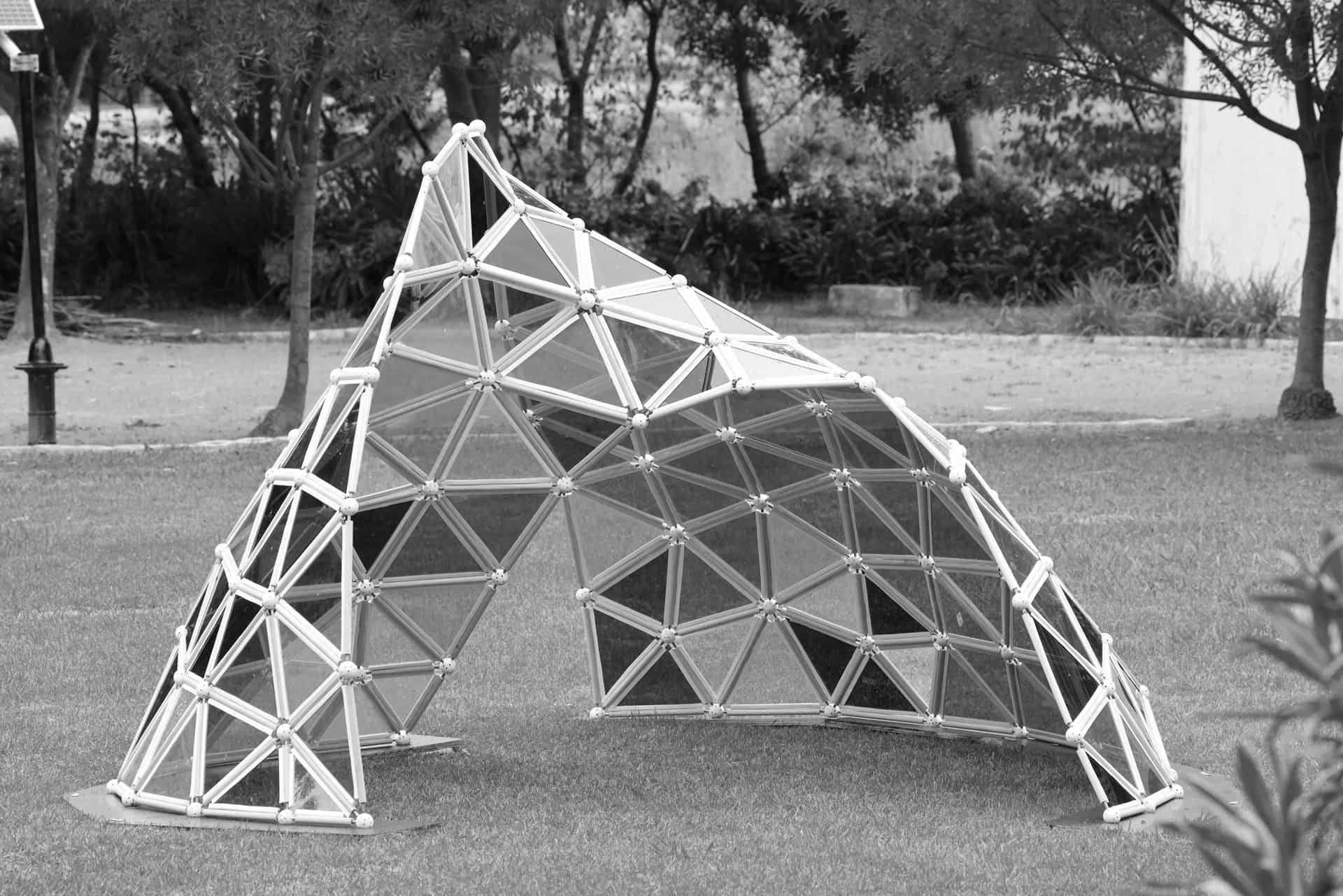Clustering and optimization of nodes, beams and panels for cost-effective fabrication of free-form surfaces, Melbourne, Australia, 2023

Free-form surfaces are increasingly used in contemporary architectural designs for their unique and elegant shapes. However, fabricating these doubly curved surfaces using panel and frame systems presents challenges due to the shape variability of nodes, beams and panels. In this study, we propose a mesh-based computational design framework that clusters and optimizes these components together, reducing the shape variety of elements for free-form surfaces.
Our method employs a vertex-based similarity metric to partition panels into user-defined groups and clusters beams based on edge lengths. A box-constrained optimization is introduced to achieve congruent faces and matching beam lengths while considering various functional constraints. Additionally, connection holes on node surfaces are clustered and optimized to allow their use at multiple locations. The practicality of our approach is demonstrated through the design and construction of a full-scale pavilion, resulting in a significant reduction in the shape variety of building elements.
Prototype: pavilion
A full-scale pavilion was designed based on the optimized result to showcase the practical application of the proposed method. The pavilion has dimensions of 3.23 m × 3 m × 1.8 m and features laser-cut transparent acrylic panels, timber rods as beams and 3D-printed nodes at joints. To fill the gaps between panels and beams, aluminum-strengthened U channels have been used as connectors, which are affixed to timber rods using industrial-grade chemical adhesives. Beams are connected to nodes using M4 hanger bolts and couplers, allowing for easy assembly and disassembly. Nine segments of heavy timber plates are joined together at the base of the pavilion to provide stability for the entire structure.
The successful construction confirms the effectiveness of the algorithm in controlling the gaps to balance construction considerations and reducing the element shape variability. Compared to the original input mesh, the optimized mesh has significantly reduced the number of different elements. Multiple beams with a matching length can be cut in a single operation using a chainsaw, while clustered panels reduce extra CAD commands needed in the CNC process. Labelling and finding the correct component during construction can be time-consuming and error-prone. With clustering, the number of different labels for the optimized mesh has been reduced by approximately 80%, leading to better precision and less error. Our method holds the potential for reducing manufacturing costs and alleviate fabrication and construction difficulties.
Publication
M. Bi, Y. Liu, X. Tao, Y. He, J. Ma, Z. Zhuang, Y.M. Xie, Clustering and optimization of nodes, beams and panels for cost-effective fabrication of free-form surfaces, Engineering Structures. 307 (2024) pp. 117912. https://doi.org/10.1016/j.engstruct.2024.117912
[Full paper]
Video
YouTube: https://youtu.be/9l1Cq9cxjMk
Key people involved in the project
Minghao Bi, Yuanpeng Liu, Tao Xu, Yunzhen He, Jiaming Ma, Zicheng Zhuang, Yi Min 'Mike' Xie